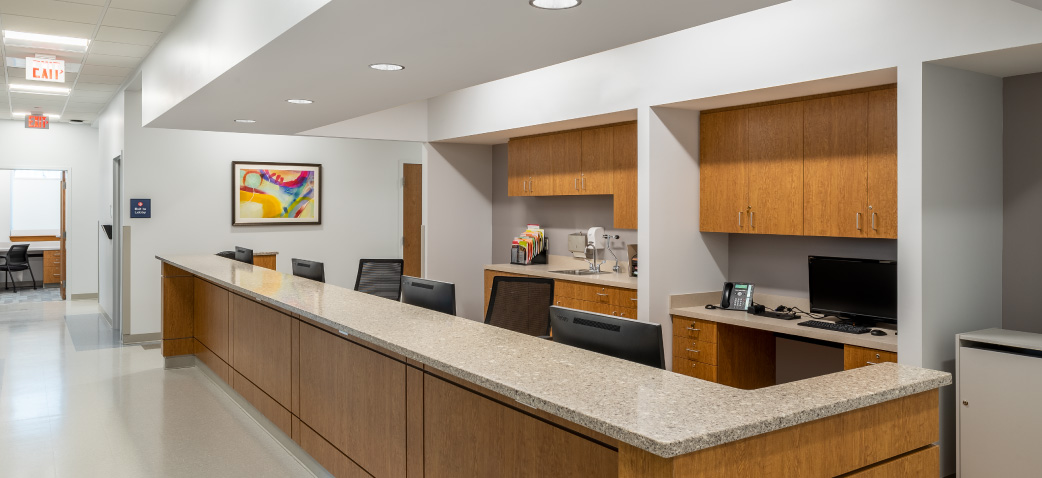In addition to providing quality care, there are numerous factors to consider when designing medical facilities in today's ever-changing healthcare industry. Patient experience is an important aspect to prioritize, as it not only attracts and retains patients, but also has a significant impact on their physical and emotional well-being. When designing a healthcare facility, it is crucial to consider how patients navigate the space, the accessibility of different departments, the clarity of signage, and the availability of amenities such as charging stations, internet access, and comfortable waiting areas. It is also important to have proper health and safety protocols in place and ample parking for patients.
For example, our healthcare team conducted interviews with staff at one of the largest Community Based Behavioral Health Centers in Massachusetts and found that design plays a crucial role in the success of treatment. As a result, all interior spaces were purposefully designed with a calming color palette and soothing materials to create a comforting environment for patients.
Architectural design can also have a significant impact on emotional health. A poorly designed or maintained facility can increase anxiety and make patients question the competence of the hospital staff. On the other hand, a well-designed facility with beautiful lobbies, outdoor healing gardens, and patient rooms filled with natural light can improve patients' sense of well-being, reduce stress, and boost their immune system, aiding in their healing process.
The impact of design on healthcare facilities goes beyond patient experience and extends to the caregivers as well. The design should inspire and promote efficient functionality for the staff working in these spaces. Implementing multi-acuity rooms in inpatient facilities can further enhance the patient and staff experience. Instead of transferring patients from unit to unit based on their level of acuity, a multi-acuity room allows patients to stay in the same room while receiving the appropriate level of care, thereby minimizing disruption to patients and increasing staff efficiency.
For a physician group in a Boston suburb that prioritized exceptional patient care, our healthcare team conducted a comprehensive survey to ensure that their new healthcare suites met the needs of patients, families, and staff. The survey recommendations were then incorporated into the redesign of the medical suites, creating a welcoming, vibrant, and functional environment for everyone.
Overall, the architect plays a crucial role in optimizing the patient experience in healthcare facilities. A well-designed environment that prioritizes the patient's well-being and creates a sense of comfort for both patients and caregivers increases the likelihood of patients returning time and again for their healthcare needs.
RELATED CONTENT
Read Healthcare News & Insights Blog

